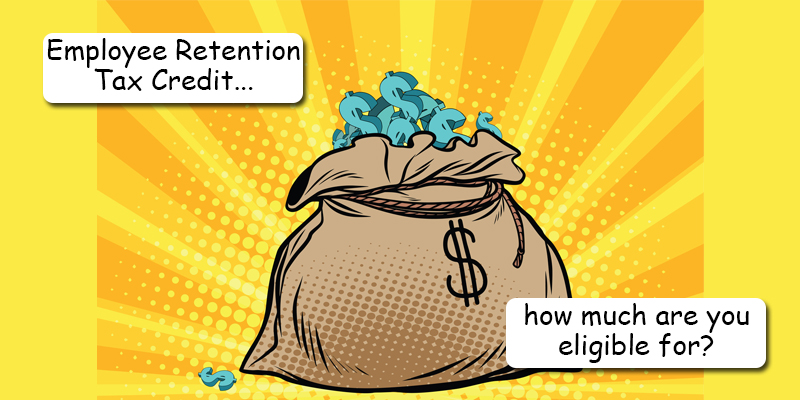Employee Retention Tax Credit The Little Known Tax Benefit
If your business was impacted by COVID-19, there is a significant amount of unclaimed money quite possibly waiting for you. The amount is up to $33,000 PER EMPLOYEE. But why have you not heard of this?

Back when the CARES Act was signed by the President on March 27, 2020, COVID-19 was expected to be short-lived (remember the 15 Days to Slow the Spread plan?) thus, the benefits were to provide short-term relief. There were a few different major benefits in that Act, but a business was only able to select one. This included the Paycheck Protection Program (PPP), the Employee Retention tax Credit (ERC) and the Employer OASDI Tax Deferral. When tax credits and deferrals are discussed, people tend to shy away, as they may seem complex, as they have to deal with the IRS, but when they are told they can go to their bank and get a loan that they dont have to pay back, they certainly understand that. As such, the PPP made the headlines. Everyone flocked to the PPP; even though it may not have been the most beneficial to the business, it was easy to understand and the other options fell by the wayside.
About Us!
As we are living the story, we find that the pandemic is still affecting businesses almost a year later. On December 27th, nine months to the day after the CARES Act, the President signed the Consolidated Appropriations (CA) Act 2021, bringing the next round of major relief to affected businesses. This time, realizing that they underestimated the duration of the pandemic, Congress made major extensions and expansion of the benefits, and PPP, once again, steals the spotlight. Unfortunately, the best benefit in the Act goes with little mainstream press coverage, the Employee Retention Tax Credit. The CA Act allowed the retroactive use of the ERC for 2020 and a business who took advantage of the PPP, that was previously precluded from taking this credit, is now allowed. This is huge in itself, not to mention that the Act also extended the ERC through December 31, 2021. In total, up to $33,000 in refundable tax credits is available to the business for every employee they have paid since March 13, 2020.
I hope I have captured your attention, especially if you believe your business was affected, so review the qualifications. There are simply two, and you only need to meet one of them.
1. Did the gross receipts (aka revenue) of your business decrease by 50% or more during any calendar quarter of 2020? For 2021, gross receipts only needed to have decreased by 20% or more, during any calendar quarter to qualify for that quarter.
2. Was your business operations fully or partially suspended by a governmental authority limiting commerce? The order can come from a federal, state, county, city or any local government agency.
While the first criteria is fairly straightforward, the second has a very broad meaning, especially partially suspended. A partial suspension can mean that the business was required to reduce capacity or change its operations. For example, a restaurant that is required to only service takeout or delivery orders and close their dining room, or a restaurant or retail business that is required to reduce capacity indoors, is considered partially suspended. The partial suspension even goes as far as meaning that maybe your business is not at all directly suspended in any way, but your essential supplier is affected. That falls under the partial suspension.
Once the business is eligible, then Qualified Wages are determined. These wages are based on the dates the business falls under one of those two qualifying categories above and whether the business received other funding to pay its employees, including, but not limited to PPP, FFCRA Sick or Family Leave and WOTC, during that period. Other factors are also taken into consideration, such as whether the employer paid for health insurance and wage limits. For 2020, the wage limit was $10,000 for the year and for 2021, the wage limit is $10,000 per calendar quarter, inclusive of the employer health insurance contribution.
The credit the business will receive is 50% of the qualified wages for the year 2020 and 70% of the qualified wages for the year 2021. If you are keeping up with the math, then 50% of $10,000 is $5,000 per employee in 2020 and for 2021, it is 70% of $10,000 for each of the four quarters. That is a maximum refundable tax credit of up to $7,000 per employee for each quarter of 2021.
The calculation can be complex, and filing for the refund is even more so, but the reward can be substantial. Whether you are a Sunrise HCM client or not, we can assist you in calculating and obtaining the maximum amount of tax refund due to your business.